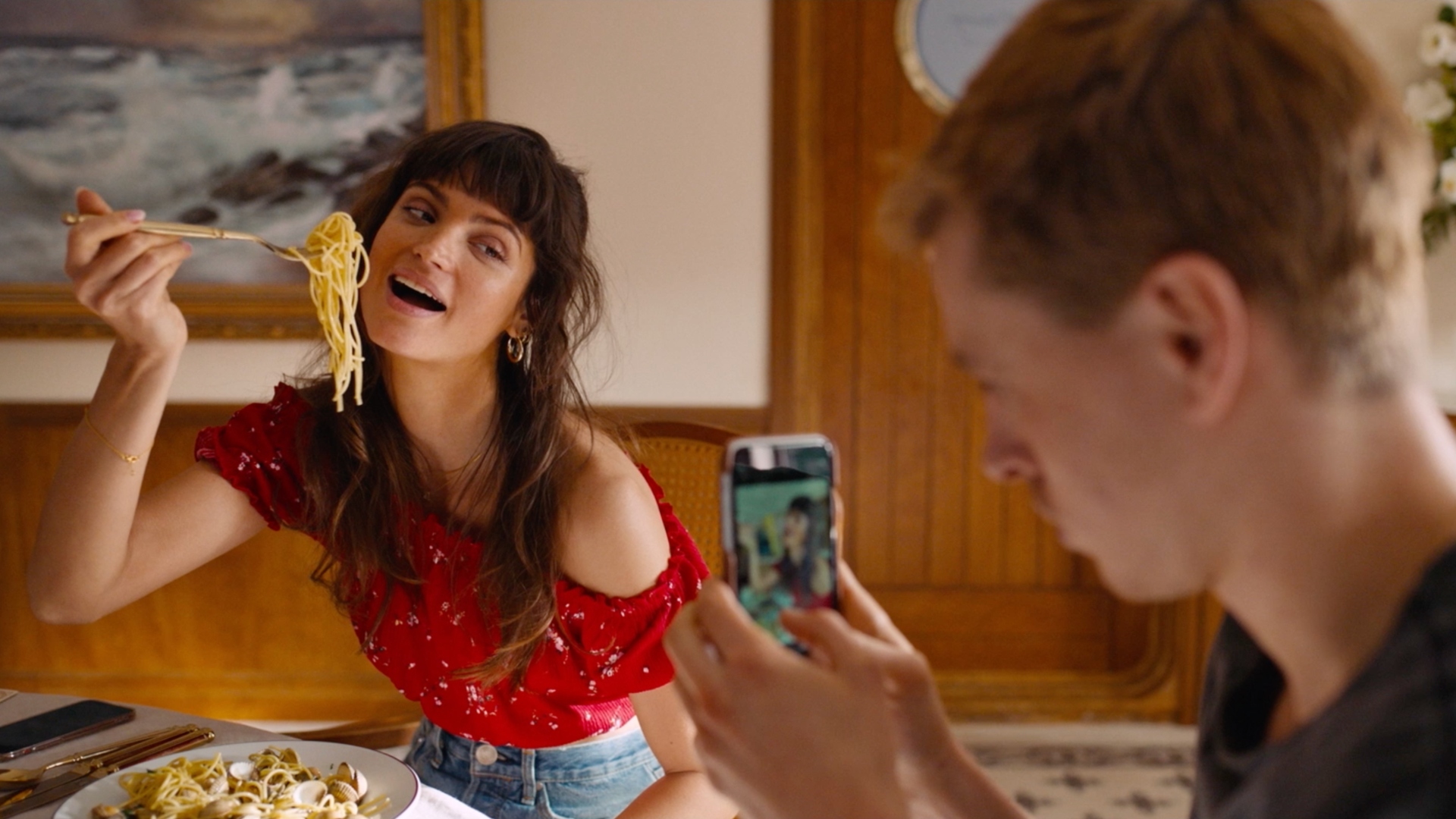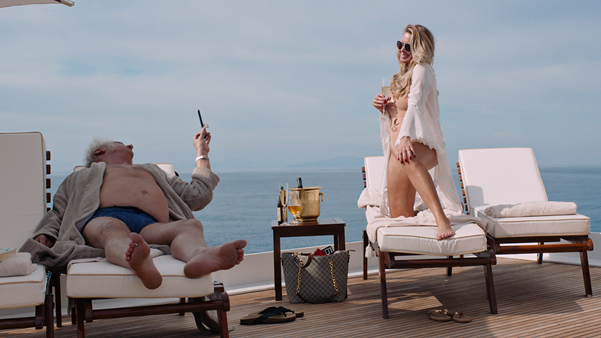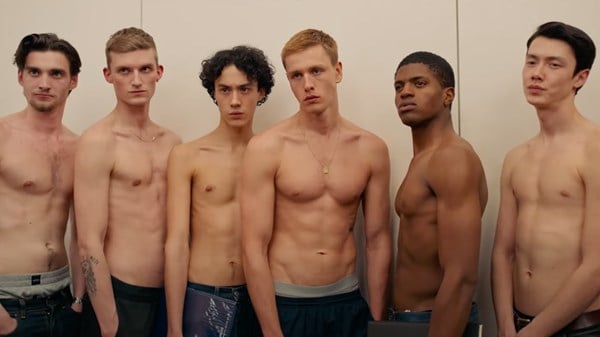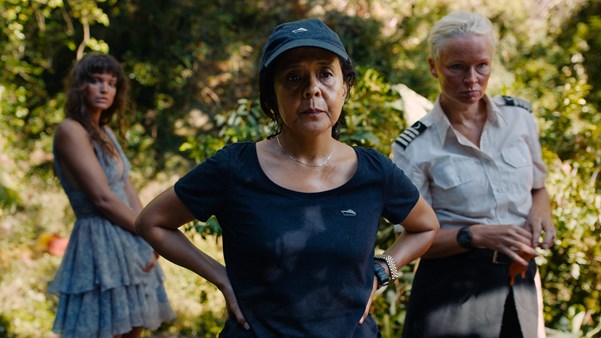Ruben Östlund talks to Anna Bogutskaya about his sixth feature Triangle of Sadness, which earned him his second Palme d’Or at Cannes earlier this year (after 2017’s The Square). It’s a blistering satire of the fashion world, influencer culture and the lives of the über-wealthy and plays out in three chapters as it follows beautiful fashion model couple Carl (Harris Dickinson) and Yaya (Charlbi Dean) at work, play and – following a disaster aboard a luxury yacht – awash on a seemingly uninhabited island.

ANNA BOGUTSKAYA: Which character first materialised for you?
RUBEN ÖSTLUND: Carl, the main character. My wife is a fashion photographer. She told me about a friend of hers who, when he was 19 and a car mechanic, was street cast and became one of the best-paid male models in the fashion world. He appeared in a perfume campaign that made him famous. But once at the top, he started to realise that he was losing his hair – his currency. His agent told him, ‘Maybe you have two more years.’ And aside from the hair problem, he was too connected with the perfume brand and was told he had to rebrand. They told him it would be great to have a famous girlfriend, but this guy was sensitive. He wanted to be in love. And that’s how Carl came about.
We usually think about women when we consider beauty as a currency, was it important that it was a male model?
A lot of the film was written during the Me Too movement. So, I thought it would be interesting to discuss that aspect of beauty and sexuality as a currency through a male character because it was so stigmatised when it came to a female character. I also wanted to show it from an economic and social perspective – that this behaviour would change if we had a matriarchal society. I wanted Carl to bring up the subject of love with Yaya and have her talk about being a trophy wife. But then, on the island, Carl is the trophy wife. I wanted to show how power structures and economic structures change our behaviour.
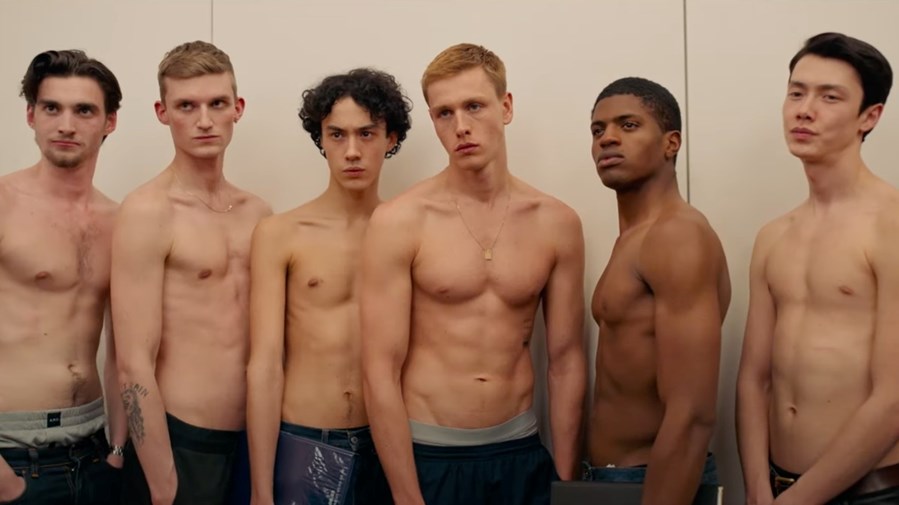
Triangle of Sadness (2022)
The currency changes when they get to the island and what was most telling was how the masks are stripped away when the currency started changing. What was most interesting to you about the unmasking of your characters?
There’s a word that I don’t like and it’s hypocrite, because I don't think any of the characters are hypocrites. I never want to assign guilt to the individual, I'd rather point at the context of the situation and take more of a sociological approach. I love the turning points that occur when there’s a shift in power. It can be just a line of dialogue. So for example, when Carl and Yaya are arguing about the bill, Carl says the waiter put the bill right in front of her and she says, ‘I didn’t see it’. That is a turning point. Then, Yaya says, ‘Wow’. That’s another turning point. So it just brings to light how we are trying to play our roles, how we are constantly adapting to the setup.
How much is power about manipulation for you?
A lot, of course. I don’t necessarily look at human relationships in that way generally. But I love when we fail at being good humans and start manipulating people. I’m also interested in the couple’s relationship because it’s the perfect set-up for manipulation – you have two [people] comparing their version of reality. I was interested in that quite a lot in Force Majeure (2014). Then again, there are a few characters who are not manipulating anyone in Triangle of Sadness. For example, the Russian oligarch is probably the nicest guy, or the arms dealer. They’re not manipulating anyone – at least in the film.
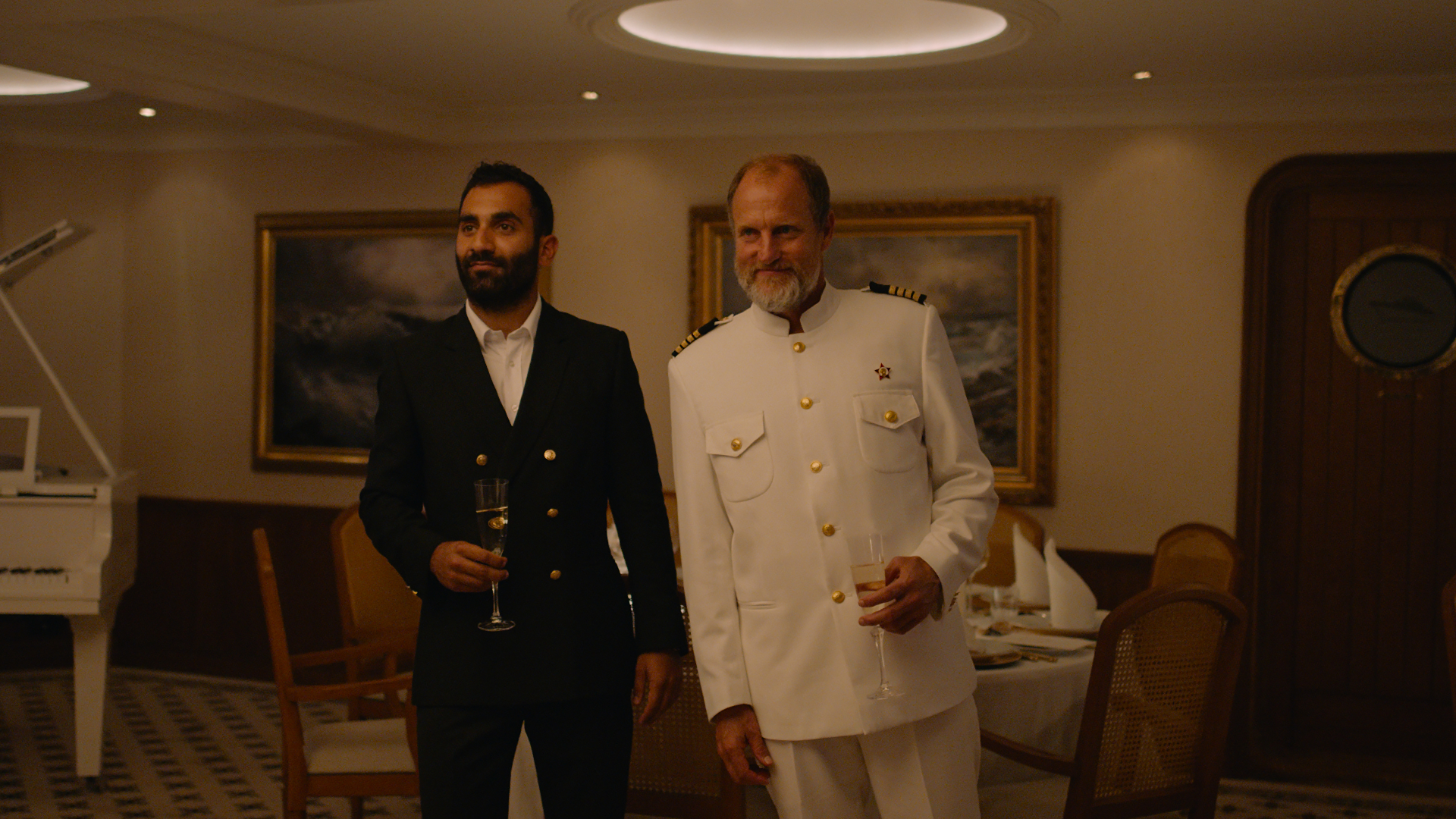
It gives us glimpses into the world of the elite, which is usually defined by being very closed off. What is so fascinating for you about these worlds?
I don’t know if the fact that I grew up on an island has anything to do with it, but when you are on an island it triggers your imagination. If you can go wherever you want there can be too many options. If you narrow down the options it becomes easier to make a decision. For instance, my next film [currently entitled The Entertainment System is Down] takes place on a long-haul flight, which is a great challenge for me. It’s also fun to work out how to tell an epic story aboard a plane. I love public transport because there is a very strong social contract on how we should behave. I also love [the reality show] Candid Camera, where people are seen to break that social contract… I think it’s fun to investigate it. [As Östlund did with his 2008 satire Involuntary and the final section of Force Majeure.] There’s also something fun in putting our trust in a driver. At what moment do we revolt? There are a lot of things that are interesting [about] these kinds of spaces. Seeing it at Cannes, I went through a whole journey with the film, going from grotesque to hilarious, and partly because of the setting in which I was watching it.
How important is it for you where the film is going to be shown?
It's very important, of course. I see the Cannes screening as the original screening. Maybe it was more obvious with the monkey performance in The Square; my idea was to watch as the audience, sitting around these tables, is confronted by the performance artist. And I really enjoyed thinking about the tuxedo-wearing audience [at Cannes] sitting and watching this. The films I'm making are very often about asking myself questions and confronting myself [with] situations I have had a hard time dealing with.
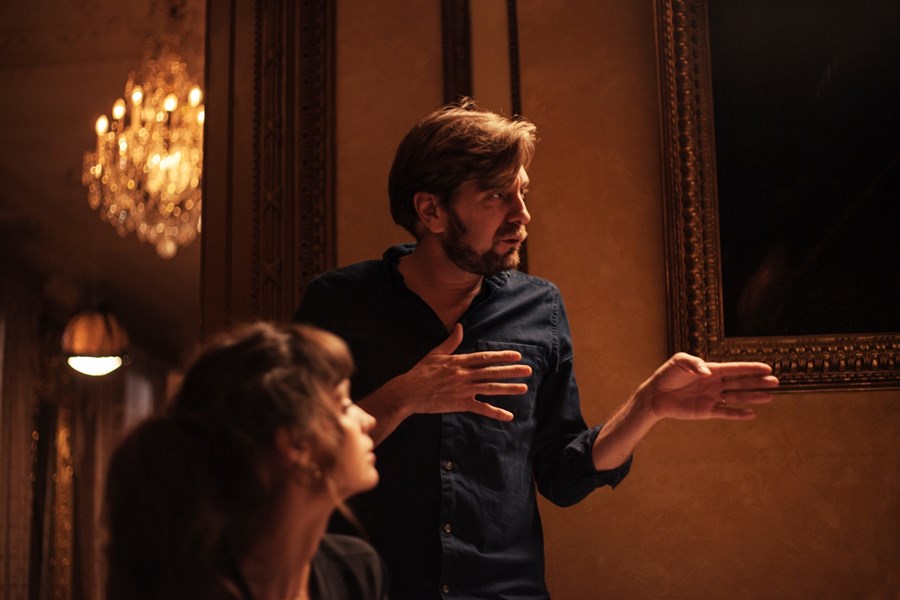
Ruben Östlund behind the scenes on Triangle of Sadness
Did you do test screenings for Triangle of Sadness, and did you at any point feel that you were pushing the audience (or yourself) to the point of discomfort?
It's interesting when you're editing or shooting a film because you become completely numb to the content. You never realise how far you have pushed it until you’re presenting it to an audience. So, I definitely thought I pushed this way too far. The one thing I noticed with the test screenings was that, if I went too far with the scenes on the yacht, the last part on the island would suffer. It’s about balance, so the length of the scene is all about not making the things that follow it suffer. I wasn’t really worried about the vomiting scene. I would be much more worried if I was dealing with violence. There are too many violent films and they’re not really doing anything new. I thought it was interesting to create a scene where people are vomiting on screen and audiences are more provoked by that than by any violent movie. We’re so used to watching violence that we’re desensitised by it. We're not so used to seeing someone do something that all of us have done.
So, you think audiences react more viscerally to scenes that remind them of their corporeality than they do towards screen violence?
Yeah, I think that’s right. I was also thinking about vomiting being so primal. We avoid it – the thought of it – because it is often connected to diseases, bacteria, infections and so on. When I was working on the script, I had someone say to me, that vomiting is a very beautiful bodily reaction because, if we didn’t have it, we wouldn't know that we have bad things in our bodies. So in that scene, I try to portray it as something beautiful. Almost operatic.
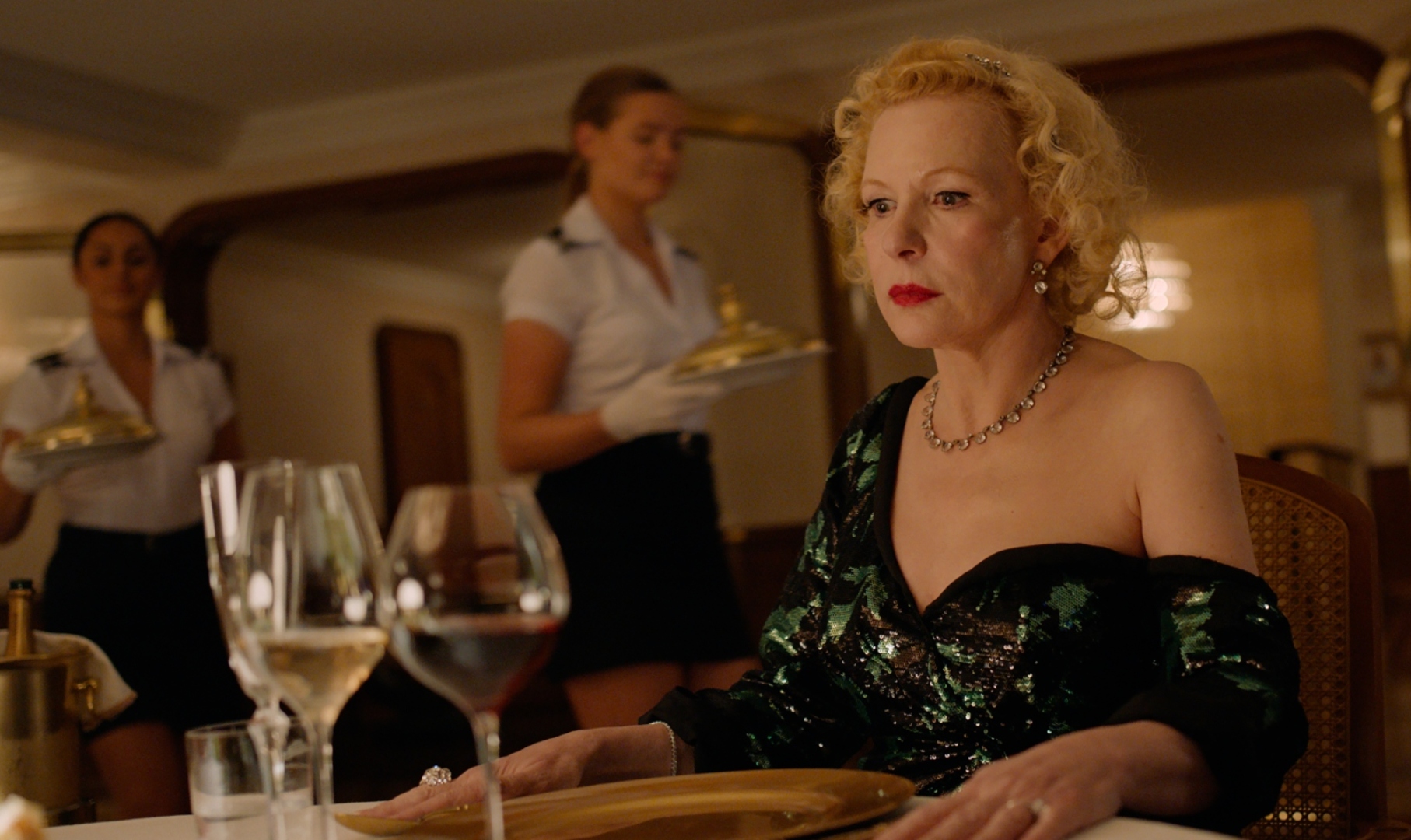
Do you think with this film in particular that it’s important to see with other people, in the public context of the cinema?
I definitely made it to work in a cinema with people. I think it’s a little sad when you hear film critics watching it by themselves because it’s not made to watch [alone]. It's almost like in theatre, they always run through the play many times with an audience in order to get to know how the dynamics are working. A film works in a different way if you're watching it alone [as opposed to] watching it with other people. [The] cinema is a completely unique space; it’s the only room where we’re watching moving images together, and [the act of] watching it together makes us reflect on the content in a completely different way. When we’re scrolling [on our devices] we don’t have to make a standpoint, but when we are in the cinema we have to because someone might ask us what we think.
Back in the day, we could decide through public television what the next generation should watch. But today, you have 14-year-old influencers who have a bigger impact on the next generation than State Public Television. I’m actually kind of worried about what that’s going to create, because the images we consume are going to change the way that we look at the world and how we behave. So the cinema is even more important today.
I’ve started to tour with my films. I have suggested to the Swedish Film Institute that [all films with their funding should] do a 10-city tour [in Sweden]. Not the big cities, the ones in the countryside that have a cinema. If we do that with all the feature films that get money from Sweden we could produce [about] 400 events every year that cinema owners can sell to audiences. [This way we can create a connection with the audience] and together we are building something that can revitalise the cinema. And it’s great if [this new generation] get to meet the people working in this business.
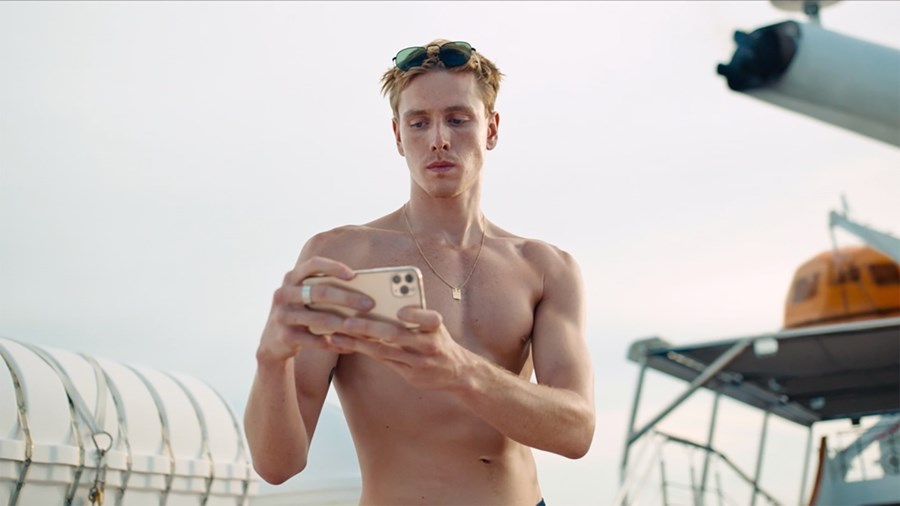
Triangle of Sadness (2022)
Where do you stand on the speed with which we are feeding ourselves these images?
I have a funny story about when I went to an all-inclusive hotel in Egypt. You know, when you have a band around your wrist and everything is free? There was an Italian restaurant, a Mexican one and an Asian one. The problem was that they all tasted exactly the same. But slowly, as the week was progressing, I start to like the food. And by the end of the week, I thought it was really good and [wanted] more! So our own taste is so dependent on what is distributed to us. We are going to start to like it.
If you look at how content is curated by artificial intelligence, it’s completely obvious that we’re narrowing down the expression of a moving image instead of widening it. Everything is about food, housing, sexuality, fears. So it’s really triggering our most primal behaviours and taking away a certain kind of sophistication. I think we’re a little bit naïve when we’re thinking about the next generation that is fed with this kind of content. They will be blind, they will not be able to ‘taste’ something that is specific in its [discernment] because we're going to be so used to the average, most common denominator.
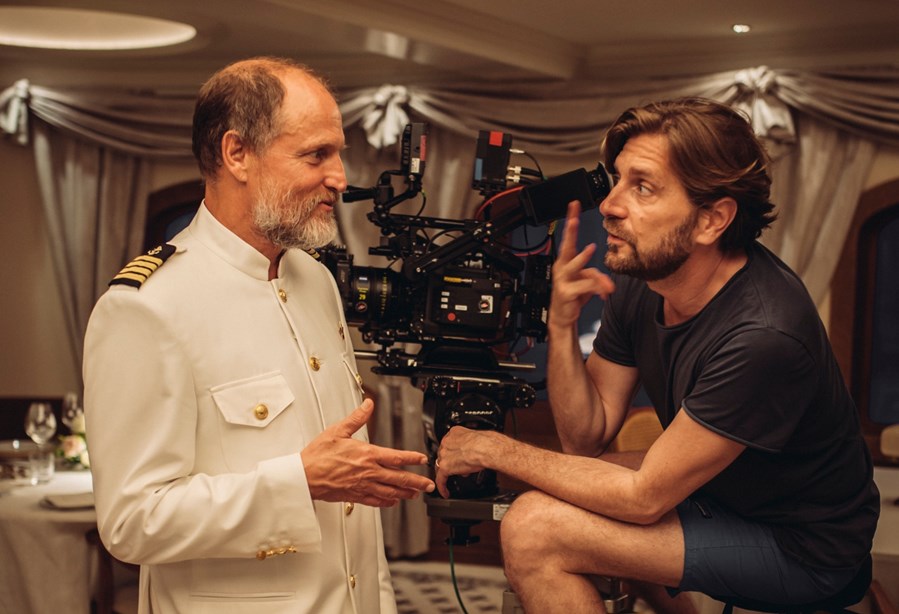
Woody Harrelson and Ruben Östlund on the set of Triangle of Sadness
On your feed, what are you finding funniest right now?
I love a YouTube clip called ‘Denver the Official Guilty Dog’. I’ve never seen shame and guilt expressed in a stronger way. I have been dealing with characters that are trying to avoid losing face, and I used that clip to show Harris [as prep] for the scene with the stolen pretzel sticks – ‘This is what we are going for, we are going to express shame stronger than this’! I definitely didn’t succeed but at least I hope it was motivating.
WATCH THE FILMS OF RUBEN ÖSTLUND IN CINEMAS OR ON CURZON HOME CINEMA
